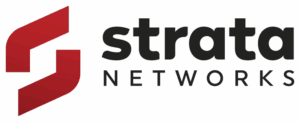Is Unified Inventory the Operating System Your Network Has Been Missing?
Trusted by:

















Managing telecom networks today can feel like navigating with outdated maps. Routes shift, layers overlap, and teams rarely agree on what’s actually connected. The network evolves rapidly—yet inventory systems often remain stuck in the past, little more than static spreadsheets behind a web interface.
The result? Service delays, misalignments, and critical outages—all because your infrastructure may be advanced, but your data isn’t. This is where Unified Inventory comes in. More than just an asset tracker, it functions like an Operating System (OS) synchronizing, simulating, and steering your network in real time.
Inventory as a Decision-Making Layer
Most inventory systems promise visibility. You can “see” devices, ports, and cables. But can you act on what you see? Can you simulate risk, route around outages, or guarantee service rollouts?
A true Unified Inventory platform like VC4 Service2Create (S2C), formerly known as IMS, is not just about what’s visible about interoperability and foresight. It becomes a real-time control plane for:
- Synchronizing live network changes
- Mapping physical infrastructure to logical services
- Running deployment impact simulations
- Preventing outages through proactive design checks
- Feeding clean, live data to OSS, orchestration, and provisioning systems
It’s the brainstem of your network. Without it, coordination breaks down.
When Inventory Doesn’t Think, the Network Slows Down
The real cost of outdated inventory isn’t just manual effort. It’s operational drag—and it builds up everywhere.
- Case: GPON Provisioning Fails at Scale
During an FTTH rollout, a regional provider assigned splitters, OLT ports, and VLANs across three new neighborhoods. Field activation failed across 600+ homes. Why? VLAN ranges were already used elsewhere. Logical inventory lived in a separate system from the physical layer. Planning had no visibility. The result: provisioning delays, service escalations, and wasted site visits. With unified inventory, this would’ve been caught before deployment—at design time.
- Case: MPLS Upgrade Triggers SLA Violations
A mid-size carrier migrated MPLS core routes without simulating service dependencies. Days later, enterprise VPNs reported degradation. SLA fines followed. The team had no idea those LSPs were part of critical paths—because the inventory couldn’t map service-to-path relationships. Without unified inventory, changes ripple blindly through your infrastructure.
Inventory as an Operating System: What it Looks Like?
Real inventory platforms do more than store cables; they understand behavior, change, and impact. With Service2Create, you can:
- Simulate WDM route changes and assess service risks
- Assign GPON ports with real-time conflict detection
- Reroute MPLS traffic using live fiber availability
- Validate logical services before field visits
- Understand how a single cabinet failure could affect 14 VLANs, 2 VPNs, and a government SLA
This isn’t theory, it’s how VC4 works in production environments.
Core Elements of Unified Inventory: Redefined
- Network Autonomy and Intelligence: Unified Inventory introduces intelligence and autonomy to networks, going beyond simple asset documentation. It continuously learns from network patterns, recognizing emerging problems before they escalate. By proactively suggesting network improvements, the inventory system transforms from a passive observer to an active participant in network health.
- Integrated Operational Decision-Making: Imagine eliminating guesswork from your operational decisions. Unified Inventory provides actionable data, integrated with real-time analytics, that guides your teams directly. Decisions about network expansions, resource reallocations, or maintenance schedules are based on actual usage patterns and performance trends, not outdated or fragmented information.
- Single Source, Infinite Clarity: The complexity of telecom networks comes from having multiple overlapping systems. Unified Inventory eliminates these redundancies by integrating:
- Physical infrastructure (cabling, equipment)
- Virtual resources (VLANs, virtual circuits)
- Logical resources (service paths, IP allocations)
This comprehensive integration means that your teams work from a single reality, drastically reducing conflicts and operational slowdowns.
Real-World Impact
- Provisioning gets fast and reliable—no more rollout surprises.
- Shadow IT disappears—teams trust the system, not their own Excel files.
- Compliance is effortless—with automated, precise reporting.
And best of all? Manual workarounds vanish. No more screenshots, WhatsApp threads, or email escalations. Just clean, trusted data.

Unique Value Beyond Common Benefits
Rather than simply focusing on generic benefits, consider these distinct reasons your network needs Unified Inventory:
- Reduced Operational Noise: Unified Inventory filters out irrelevant data and alerts, allowing your team to focus only on actionable information.
- Crisis Mitigation: Advanced warning systems embedded in Unified Inventory significantly reduce the likelihood of unexpected outages or performance degradation.
- Knowledge Retention: Employee transitions no longer risk losing institutional knowledge; the system retains detailed, intuitive histories of network changes and interventions.
Purpose-Built for Telecom, Utilities, Smart Cities and more. Not Just Another IT Platform in Disguise.
Most “inventory solutions” in the market were designed for IT environments—not for service providers managing tens of thousands of physical and logical connections across multiple technologies. They track servers, VMs, and devices. They do well. But ask them to map a logical VLAN over a WDM circuit, through a passive cabinet, across an MPLS tunnel… and they fail. This is where IT-focused systems are not really up for the task.
They weren’t built for:
- GPON splitter trees with service-layer overlays
- WDM lambda-to-service correlation
- SLA-backed VPNs running over shared feeder routes
- Real-time planning simulation tied to physical inventory
- Impact tracing across multi-vendor core networks
That’s where a telecom-native inventory platform becomes non-negotiable.
Solutions like S2C aren’t retrofitted with telecom checkboxes—they’re engineered from the ground up to model physical, logical, and service layers as they actually exist in the field.
The difference? You don’t need middleware to make sense of your own network.
Your provisioning teams, field ops, planners, and automation workflows are already speaking the same language—because the system was designed for how telecom actually operates.
What Other Vendors Won’t Tell You
Other platforms talk about dashboards. Unified Inventory delivers decisions. Here’s what matters:
- SLA tracing: Can you see what breaks when a port goes down?
- Provisioning intelligence: Can you prevent misconfiguration before rollout?
- Service modeling: Can you trace a VPN path across multiple domains in seconds?
- Orchestration enablement: Is your automation using clean, validated data—or outdated assumptions?
This is where IT-centric platforms fall short—and where telecom/communication network -first inventory proves its value.
How Smart Operators Roll Out Unified Inventory
Success starts small:
- Identify high-risk pain points (GPON, MPLS, WDM)
- Unify physical and logical data
- Run impact simulations
- Involve NOC, planning, and field ops early
- Measure ROI in activations, uptime, and handover clarity
This isn’t a tool install. It’s a foundation shift. And with S2C’s modular, cloud-native, low-code architecture, the rollout is faster than you think.
Final Thought: VC4 Service2Create—Your Network’s Command Center
When inventory becomes your OS, and that OS is purpose-built by telecom experts, your team stop chasing issues and start delivering outcomes. With S2C, you don’t just visualize your network, you master it.
Don’t wait for the next outage, rollout delay, or SLA breach to show you the cost of outdated inventory. With VC4 Service2Create, you gain a unified, intelligent, and telecom/ communication network focused platform that transforms how your teams plan, provision, and perform. Your network deserves better. Contact us today or book a demo and let’s build it together.






